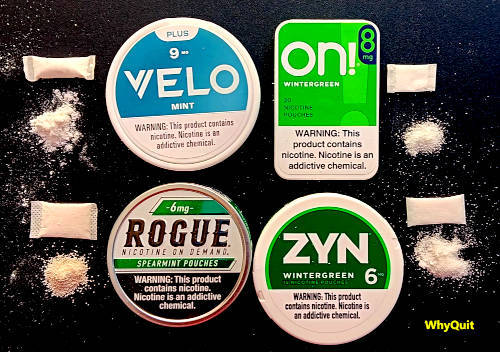
Surge in ER visits among nicotine pouch users raises concerns
A disturbing pattern is emerging among users of nicotine pouches: unprecedented rates of severe anxiety and heart attack-like symptoms driving emergency room visits among otherwise healthy young adults. These symptoms are being reported both during active use and cessation attempts.
The phenomenon is evidenced by quitting support group posts. A 25-year-old former college athlete reported multiple EKGs and a chest X-ray after experiencing "3-4 anxiety/panic attacks a day." Another user described rushing to the ER with "heart palpitations, crazy anxiety, high blood pressure and elevated heart rate" - symptoms that began during active pouch use.
One user documented dramatic improvement in heart rate variability (HRV) scores just one day after quitting: "For the last few months I've been having horrible anxiety/panic attacks (never had anxiety in my life), to the point where I had to call an ambulance... my HRV score doubled its average after just one day nicotine-free."
The blood sugar connection may be significant. One user wearing a continuous glucose monitor during withdrawal worked with doctors to identify a pattern of reactive hypoglycemia, particularly during sleep. "That's the panic attacks," noted another experienced quitter, "possibly caused from blood sugar dropping in your sleep followed by an overcorrection of release of adrenaline to compensate."
"In nearly 50 years of conducting smoking cessation programs, I almost never had people experiencing symptoms mimicking a heart attack," says Joel Spitzer, America's leading nicotine cessation educator who conducted 690 seminars and 350 13-day clinics between 1972 and 2008. "What we're seeing with nicotine pouches is different. Users are regularly reporting symptoms severe enough to send them to emergency rooms, both while using and during withdrawal."
While Lunell 2020 found that a substantial percentage of pouch nicotine is not extracted, the highest nicotine strength among the four leading U.S. brands are Velo 9mg, on! 8mg, Zyn 6mg, and Rogue 6mg.
This clustering of severe cardiac-like symptoms differs markedly from traditional cigarette cessation. While many cases are ultimately diagnosed as panic attacks, the frequency and severity of these episodes warrant serious research and policy attention, especially given how rapidly nicotine pouch sales are growing.
Multiple factors may contribute to this phenomenon:
- High dosing of pharmaceutical-grade nicotine and nicotine salts
- Potentially higher average blood nicotine levels due to ease of constant use
- Blood sugar disruption and autonomic nervous system effects
- Direct absorption through oral tissues
- The young average age of many users
This pattern raises urgent questions requiring research attention:
- Are nicotine pouches creating more intense physical dependency than traditional tobacco products?
- What role does blood sugar disruption play in symptom severity?
- What are the autonomic nervous system impacts of high-dose pharmaceutical-grade nicotine delivery?
- Are there unique risks for young adult users?
- What are the nicotine cessation implications?
Conflicts Disclosure: WhyQuit is a self-funded abrupt nicotine cessation education and support site that has declined donations since its 1999 founding, including not accepting any government, pharmaceutical industry, or tobacco industry funding.
 John R. Polito received his JD from the University of South Carolina School of Law in 1985. He is a former 3-pack-a-day thirty-year smoker and the 1999 founder of WhyQuit. A nicotine cessation educator since 2000, John mentored under Joel Spitzer for two decades, presenting more than 100 live nicotine dependency recovery programs modeled after Joel's programs. He is the author of "Freedom from Nicotine - The Journey Home," "Smart Turkey," journal articles, and founder and director of Turkeyville, a 17,000-member Facebook support group exclusively for cold turkey quitters. Email: johnpolito54@gmail.com
John R. Polito received his JD from the University of South Carolina School of Law in 1985. He is a former 3-pack-a-day thirty-year smoker and the 1999 founder of WhyQuit. A nicotine cessation educator since 2000, John mentored under Joel Spitzer for two decades, presenting more than 100 live nicotine dependency recovery programs modeled after Joel's programs. He is the author of "Freedom from Nicotine - The Journey Home," "Smart Turkey," journal articles, and founder and director of Turkeyville, a 17,000-member Facebook support group exclusively for cold turkey quitters. Email: johnpolito54@gmail.com


